Large-scale system suited to conditions in Ecuador and other shrimp- and tilapia-farming countries
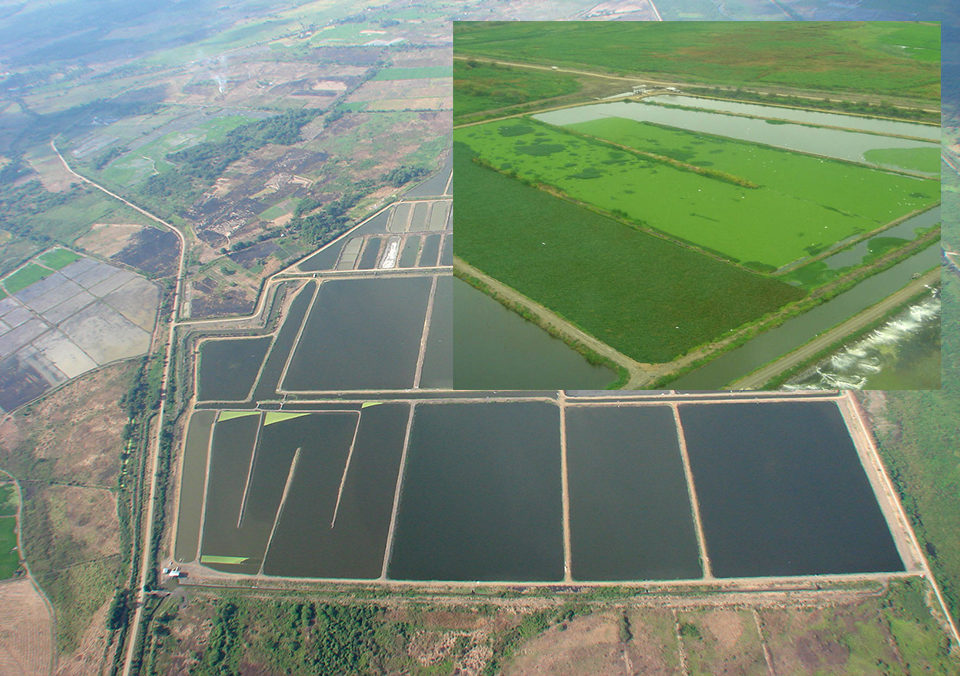
Ecuador has been a global leader in the development of large-scale aquaculture production technologies for shrimp during the last three decades, and more recently also for tilapia. Its shrimp-farming industry was seriously affected in the last 15 years by outbreaks of viral diseases, which stimulated further refinements to maintain viability and achieve higher levels of biosecurity for its shrimp industry, as well as expand tilapia farming to diversify production and create new growth opportunities and revenue streams.
The quest for improved production technology continues, and within this context, Grupo Garzal has developed an efficient, large-scale recirculation system well suited to local conditions in Ecuador and other shrimp- and tilapia-farming countries. The company took advantage of farming infrastructure abandoned years ago due to shrimp disease problems and created a promising technology that is adaptable to new projects and can be retrofitted to existing ones to provide efficient, safe and responsible production of shrimp and tilapia.
Recirculating technology
The recirculating system was developed by combining technology from the wastewater treatment industry with newer techniques used in intensive shrimp production in greenhouse systems, which can produce and maintain bacterial flocs with no water exchange during 150 days with excellent shrimp survival, feed conversion and sizes. However, in these greenhouse systems, the high cost of electric energy generally prevents the technology from being profitable while also having high levels of risk due to the large standing biomass and dependence on continuous mechanical aeration, backup power generators and expensive labor, among other input needs.
Grupo Garzal has implemented the recirculating technology in two integrated production systems and two other systems adapted to traditional shrimp farms for a total production area of around 1,000 hectares (ha).
Benefits
The systems offer several benefits, including bacterial population stability, water “maturity” in newly stocked ponds and very limited disinfection requirements due to bacteria or parasites. There is much faster turnover between production cycles due to reduced pond preparation time. No external pollution from agriculture, urban or industrial sources takes place.
The systems maintain stable salinity and pH, as well as high levels of dissolved oxygen, facilitated by continuous water movement within the system. Mechanical aeration support has been reduced from 80 hp per ha to 20 to 30 hp per ha.
In addition, a significant reduction in settling material is observed in reservoir canals and other areas, due to the elimination of most external water and sediment load inputs. This also promotes more effective competitive exclusion of cyanobacteria and fungi, more efficient use of water pumping due to reduced hydraulic levels and a reduction in biological and chemical oxygen demands due to improved bacterial action and better soil condition.
Because many nutrients are significantly recycled, water fertilization is not necessary. In traditional flow-through production systems, nutrients are wastefully released and often affect receiving waters. No antibiotics are used in the systems, and culture animals often have improved pigmentation, which increases market appeal.
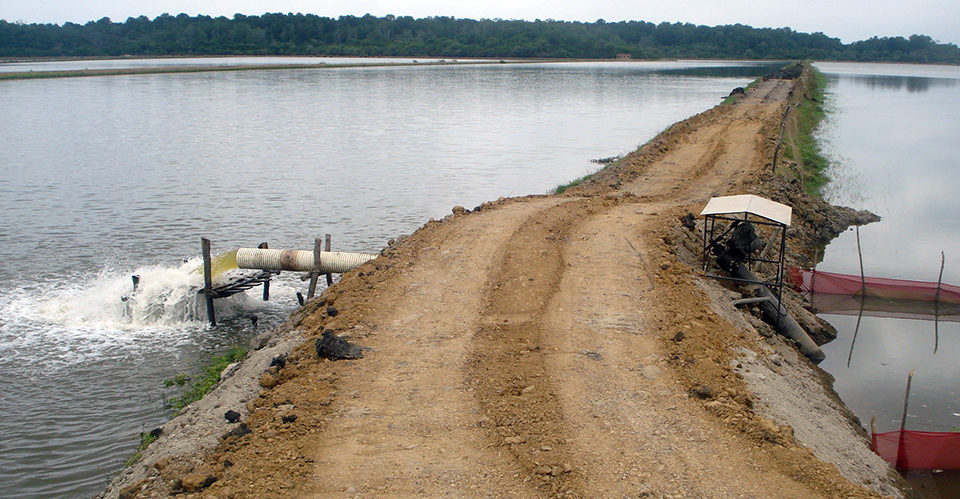
System technology, production
The basic recirculation system is based on sedimentation and recirculation ponds, where probiotic, heterotrophic bacteria are promoted to compete with pathogenic ones for biological space. Nitrogenous waste in the system is recycled, and water is clarified by decantation and also degassed by the continuous movement.
With the recirculation system, water is reused until the concentration of certain ions makes it necessary to pump in new water, which is typically done during times of higher salinity during the year in preparation for the rainy season, when salinity drops to zero.
The mean hydraulic residence time in the recirculation unit is two to three days, with a recirculation capacity of 20 to 30 percent. The area devoted to the recirculation unit must be no less than 10 percent of the pond area of the farm. The hydraulic retention capacity must be based on the water recirculation capacity needed.
Grupo Garzal produces its own seedstock and stocks several lines of Nile tilapia, including red hybrids (Chitralada and Chitralada Jamaica) and Pacific white shrimp (Litopenaeus vannamei). Production levels vary depending on stocking densities and other variables. Depending on the season and management production targets, .05-gram shrimp are stocked at 10 to 50 animals per square meter in polyculture. The tilapia hatchery produces 1-gram fish that are grown to 150 grams before transfer to another production area for grow-out to a market size of 600 to 800 grams.
Tilapia yields are typically 1.0-3.5 metric tons (MT) per ha per cycle. However, the most productive systems can yield 800-gram tilapia at around 3 kg/ha/cycle and 18-gram shrimp at 1.36 MT/ha/cycle, with up to 2.3 cycles yearly. Survivals of 90 percent and 47 percent are achieved for tilapia and shrimp, respectively. Feed-conversion ratios average 1.2 for tilapia.
Various lime products are used extensively to adjust alkalinity and maintain a favorable production environment. Probiotic products and aquafeeds with low protein content are also used.
If effluents are released to the environment during the rainy season, water is first filtered through ponds with water hyacinths, which have been used for many years to reduce the nitrogen and phosphorus nutrients in effluents from dairy and swine farms. The plants also assist in removing suspended solids and, various compounds, and improve biochemical oxygen demand.
(Editor’s Note: This article was originally published in the September/October 2009 print edition of the Global Aquaculture Advocate.)
Now that you've reached the end of the article ...
… please consider supporting GSA’s mission to advance responsible seafood practices through education, advocacy and third-party assurances. The Advocate aims to document the evolution of responsible seafood practices and share the expansive knowledge of our vast network of contributors.
By becoming a Global Seafood Alliance member, you’re ensuring that all of the pre-competitive work we do through member benefits, resources and events can continue. Individual membership costs just $50 a year.
Not a GSA member? Join us.
Author
-
Ing. Fernando Huerta Dorman
Technical Manager
Grupo Garzal
Urbanización Río Grande
Km 0.5 vía a Samborondón
Guayaquil, Ecuador
Tagged With
Related Posts
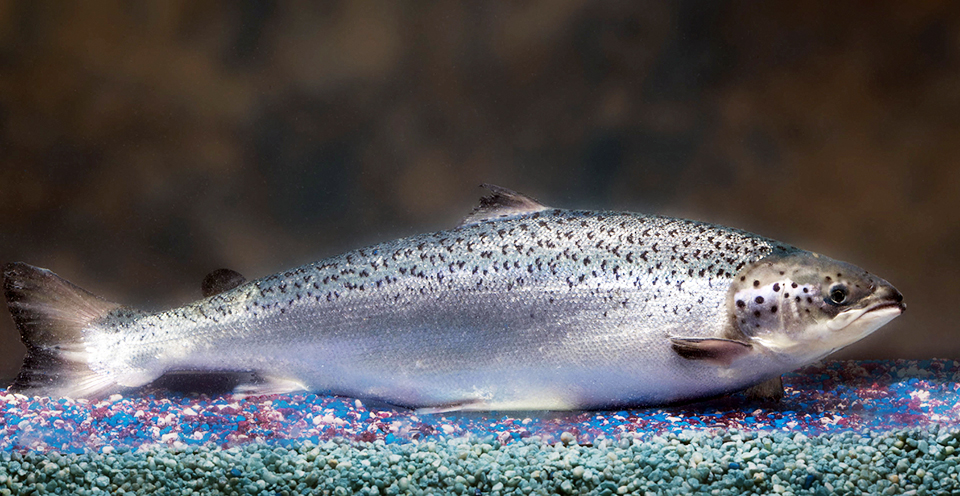
Intelligence
A brief look at genetically modified salmon
If approved by FDA, fast-growing genetically modified salmon will provide a safe and nutritious product similar to other farmed Atlantic salmon.
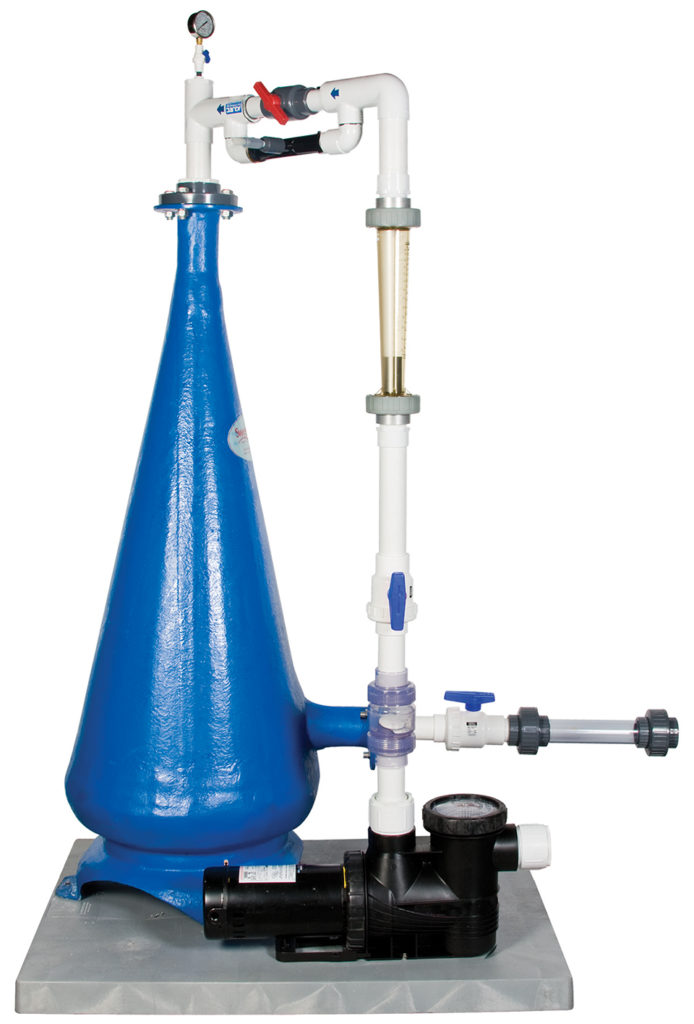
Responsibility
A look at unit processes in RAS systems
The ability to maintain adequate oxygen levels can be a limiting factor in carrying capacities for RAS. The amount of oxygen required is largely dictated by the feed rate and length of time waste solids remain within the systems.

Responsibility
A look at various intensive shrimp farming systems in Asia
The impact of diseases led some Asian shrimp farming countries to develop biofloc and recirculation aquaculture system (RAS) production technologies. Treating incoming water for culture operations and wastewater treatment are biosecurity measures for disease prevention and control.
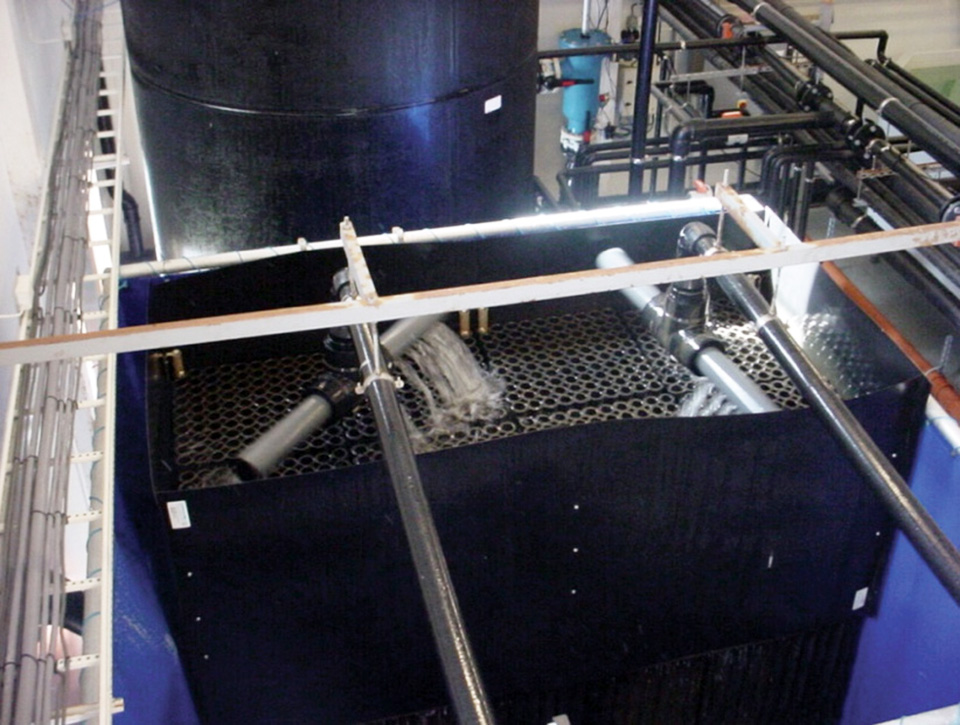
Innovation & Investment
A review of unit processes in RAS systems
Since un-ionized ammonia-nitrogen and nitrite-nitrogen are toxic to most finfish, controlling their concentrations in culture tanks is a primary objective in the design of recirculating aquaculture systems.


